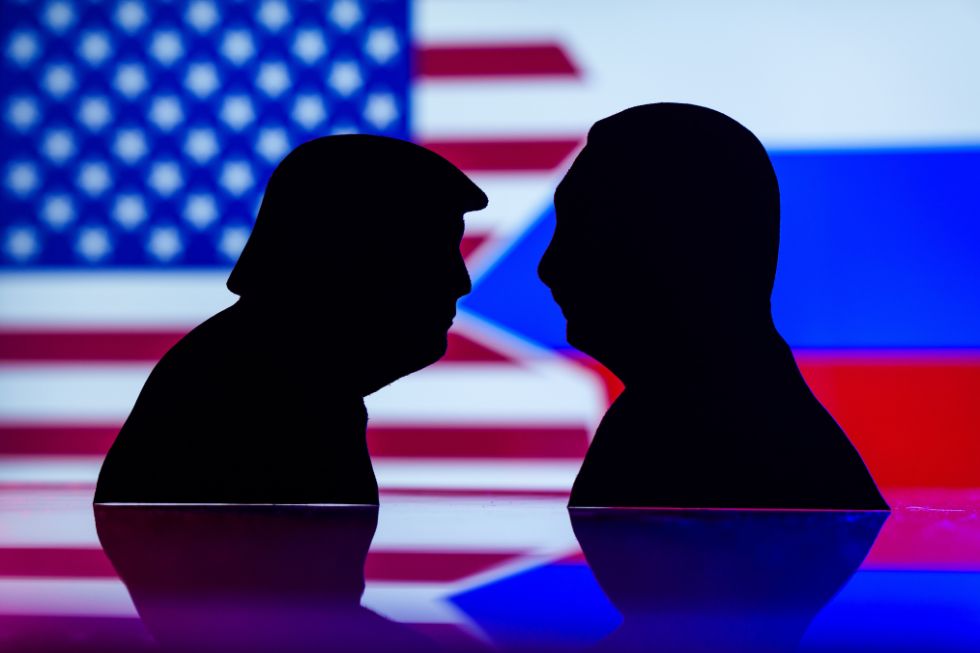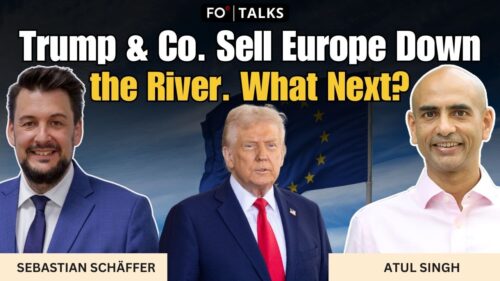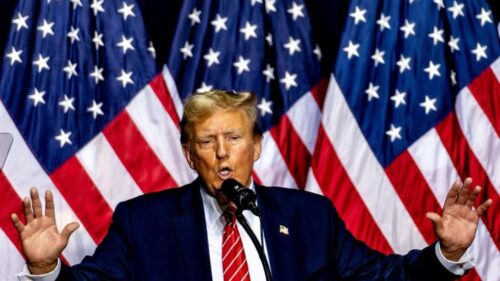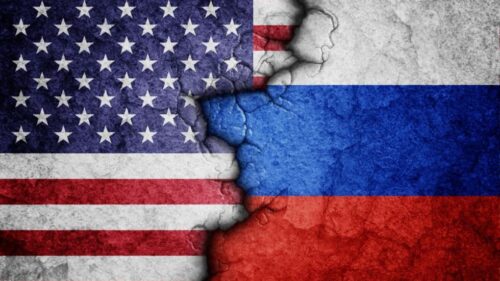What is behind US President Donald Trump’s bromance with Russian President Vladimir Putin? Is it essentially personal? Is there a strategy involved? Is it ideological? Is it the first step within a great design? Siding with Russia and distancing himself from Europe is certainly creating havoc in the rules of the game that prevailed during the last eight decades. A gradation of plausible reasons might explain Trump’s actions in this regard.
Putin, a natural ally
The first of these reasons could be that he perceives Vladimir Putin as a natural ally. This would be based in a commonality of ideas and a perceived commonality of experiences.
As with other far-right populists, Trump sees Putin as someone whose ideas are in tune with his own. Referring to the Trump–Putin summit held in Helsinki in July 2018, American columnist Robert Kagan argued that it was a meeting between allies, with convergent ideas, interests and goals — to destroy the international liberal order. As he asserted, the United States and Russia were not allies, but Trump and Putin certainly were.
Ronald Brownstein, a senior editor at The Atlantic, concurs with this assertion in relation to far-right populists in general: “But the conservative-populist nationalists in both the United States and Europe view Putin as a potential ally … [They] share a common set of priorities focused on restricting immigration, unwinding global economic and political integration (by renouncing the European Union, and, for some … NATO as well), taking tougher steps to fight Islamic radicalism, and, in most cases, opposing cultural liberalism and secularization at home. On all those fronts, they view Putin not as a threat, but as an ally.” Far-right populists in general and Trump in particular certainly agree with values such as those expressed by Putin in his February 29, 2024, state of the nation address: “Some countries deliberately destroy norms of morality, institutions of the family, push whole peoples towards extinction and degeneration.”
Beyond common ideas, though, there are common experiences, at least in Trump’s mind. Mark Mazzetti, reporter for The New York Times, explains this well: “In early 2017, American intelligence agencies delivered an unequivocal judgement about why President Vladimir V. Putin of Russia had ordered a sprawling effort to sabotage the recent American presidential election … As a way to achieve this goal, the assessment found, Russia worked to help Donald J. Trump win the election. Eight years later, Mr. Trump sat in the Oval Office for a blustery meeting with President Volodymyr Zelensky of Ukraine and rendered, once again, his own judgement of that period. There was no Russian sabotage, just a ‘phony witch hunt’ of which both he and Mr. Putin were victims. ‘Let me tell you, Putin went through a hell of a lot with me,’ he said. The statement was a tell. The President sees common cause with Mr. Putin, a merging of interests forged through battles against those he believes are his and Mr. Putin’s mutual adversaries — including Democratic lawmakers, European leaders and a spectral ‘deep state’ inside the U.S. government.”
Under this “ally” category, we find, thus, ideological and personal elements. Trump, as well as other populist, far-right politicians and parties, shares a revisionist approach to the prevailing international order. One in tune with that of countries such as Russia and China, which challenge liberal norms and seek an alternative global order. This implies a rejection of the rules-based international liberal one that, under the stewardship of the United States, prevailed during the last 80 years. But on top of foreign policy coincidences, there is also convergence in their common rejection of cultural liberalism. Ideologically, then, Trump and Putin are on the same page. For Trump, however, alliances need to have a personal character, whether of a tributary nature towards his ego or through shared common experiences. In this case, Trump sees Putin as a route companion and, hence, as a soul mate.
A Moscow–Beijing wedge
A second plausible motive behind Trump’s approach to Putin would be that he wants to introduce a wedge between Moscow and Beijing. By befriending Russia, he might be aiming at distancing it from China. According to The New York Times journalist David E. Sanger, “Secretary of State Marco Rubio, a classic Russia hardliner before he took his current post, suggested that Mr. Trump was trying to tear Russia away from its growing partnership with China.” Trump himself said it explicitly to Tucker Carlson in an October 2024 interview: “The one thing you never want to happen is you never want Russia and China uniting. I’m going to have to un-unite them, and I think I can do that.”
From an American realist point of view, it must be said that Russia and China should have never been allowed to coalesce in the way they did. Common sense would have advised Washington to act as Mao Zedong did at the beginning of the 1970s, when he approached the United States in order to contain the Soviet Union. This would have led to prioritizing objectives by approaching and befriending the lesser of the two rival threats, especially after 2008 as the danger implicit in this dual rivalry became visible. On the one hand, Russia invaded Georgia, making clear that it would resist further western encroachments in what it considered as its natural sphere of influence. On the other hand, China’s assertiveness and its desire to control its own sphere of influence in the Indo-Pacific became evident. By choosing to challenge both Moscow and Beijing at the same time, Washington invited both rivals to join ranks.
From the perspective of the realist school of international relations, which has included towering American figures such as George Kennan, Henry Kissinger, John Mearsheimer, Kenneth Waltz and Stephen Walt, Russia was mistreated by the West. It was, indeed, repeatedly and unnecessarily bullied. Since the implosion of the Soviet Union, the West undertook a triple package of policies that cornered Russia: NATO’s expansion, the enlargement of the European Union and democracy promotion. Russia’s neighborhood, as a result, became utterly unfriendly to Moscow. From a realist’s approach, hence, it was obvious that if pressure was to be taken away from either Russia or China, Moscow should have taken clear precedence.
Trump’s intentions of befriending Moscow to put a wedge in its relations with China could somehow be interpreted as realist in nature. The problem is that it is too late for that, as realists would surely recognize. What would have made sense a bit more than a decade ago looks unattainable at this point. Coziness between Putin and Chinese President Xi Jinping has grown over time, making them true pals. On May 16, 2024, they both signed a 7,000-word-long joint statement agreeing to deepen their countries’ “strategic partnership” and take it to a “new era” while scolding the United States for representing a threat to their nations and to the existing world strategic balance. This represented the 43rd meeting between both chiefs of state and delved into the joint statement of their February 2022 meeting on the sidelines of the Beijing Winter Olympics. The 5,000-word document that they signed on that occasion stated that “the friendship between the two States has no limits” and that there were not “forbidden areas” of cooperation between them.
Referring to the 2022 joint statement, David E. Sanger wrote in his book New Cold Wars, “The two dictators … released a five-thousand-word document that suggested the two longtime rivals were forming a true alliance … A new China-Russia condominium had the potential to be the most consequential change in the geopolitical landscape in decades. If it succeeded — even if it was only a partial success — it would create an alternative axis of power unlike any that existed in the Cold War … ‘It’s a strong partnership,’ Bill Burns told me later, choosing his words carefully, ‘that is born of a shared interest in chipping away at an American-led international order.’”
A global triumvirate
The third plausible reason behind Trump’s friendly approach to Putin is that it could represent the first step towards joining the revisionist camp. Not only is Trump’s international mindset clearly revisionist, and his vision of Putin that of a natural ally, but he seems keen in attaining a grand bargain with China as well. Referring to this bargain, Chinese foreign policy expert Patricia M. Kim says, “The allure of a single, sweeping deal is understandable. It offers the promise of clarity in a troubled, high-stakes relationship.” On top, if it’s too late to break the Putin–Xi bromance, Trump might be tempted to join it. This would be the equivalent to the Roman Republic’s triumvirate of the sort of those that existed between Julius Caesar, Pompey and Crassus or between Lepidus, Mark Antony and Octavian. Meaning, a tripartite political alliance aimed at dividing the world.
Trump’s alliance with Putin is a given fact. As for the rationality of an alliance with Xi, historian Niall Ferguson says, “In Trump’s view, a ‘big deal’ might be the only way to avoid having to start a war that the United States might not win. ‘One of Trump’s favorite comparisons,’ [John] Bolton recalls, ‘was to point to the tip of one of his Sharpies and say, “This is Taiwan,” then point to the Resolute desk [in the Oval Office] and say, “This is China.”’ It was not just the discrepancy in size that bothered him. ‘Taiwan is like two feet from China … We are 8,000 miles away. If they invade, there isn’t a fucking thing we can do about it.’”
Once again, if you cannot beat them, join them. And as a good Roman triumvir, there would be much Trump would like to put his hands on in exchange for giving free reign to his fellow triumvirs. In The New York Times columnist Ezra Klein’s words, “Trump fundamentally wants the landmass of America to be larger when he leaves office.” He wants the Panama Canal back. He has ramped up his threats to annex Greenland, potentially by force. He wants to seize control of Gaza and permanently displace the entire Palestinian population, by use of force if needed. And of course, he wants the icing on the cake: Canada becoming America’s 51st state. In Trump’s words to Canadian Prime Minister Justin Trudeau in their February phone call: “the artificial line of separation drawn many years ago will finally disappear.” Indeed, as reported, he “did not believe that the border treaty between the two nations was valid.”
In exchange, China could be able to annex Taiwan, have its maritime claim over 90% of the South China Sea fully recognized, take control of the Diaoyu Islands and anything else that it might wish. Russia, after a temporary postponement, could go back for the rest of Ukraine, or for Moldova, or for the Baltic states. Every one of the triumvirs, indeed, would be able to carve its own imperial space and its sphere of influence, in the same manner in which in 43 BC, Octavian became master of the west, Mark Antony became master of the east and Lepidus got Africa.
What will end up happening is difficult to predict. However, something is certain — the 80-year-old, rules-based liberal international order has been blown to pieces while revisionism is gaining immense ground. Let us hope, though, that the third mentioned scenario, that of a Trump–Putin–Xi global triumvirate, never materializes.
[Avery Ewing edited this piece.]
The views expressed in this article are the author’s own and do not necessarily reflect Fair Observer’s editorial policy.
Support Fair Observer
We rely on your support for our independence, diversity and quality.
For more than 10 years, Fair Observer has been free, fair and independent. No billionaire owns us, no advertisers control us. We are a reader-supported nonprofit. Unlike many other publications, we keep our content free for readers regardless of where they live or whether they can afford to pay. We have no paywalls and no ads.
In the post-truth era of fake news, echo chambers and filter bubbles, we publish a plurality of perspectives from around the world. Anyone can publish with us, but everyone goes through a rigorous editorial process. So, you get fact-checked, well-reasoned content instead of noise.
We publish 3,000+ voices from 90+ countries. We also conduct education and training programs
on subjects ranging from digital media and journalism to writing and critical thinking. This
doesn’t come cheap. Servers, editors, trainers and web developers cost
money.
Please consider supporting us on a regular basis as a recurring donor or a
sustaining member.
Will you support FO’s journalism?
We rely on your support for our independence, diversity and quality.









Comment